Abstract
In order to determine whether the precursor solution of sweat is abnormal in cystic fibrosis, osmolality and concentrations of sodium and chloride were measured in fluid obtained by micropuncture from the sweat gland coil of the nail fold of patients with this disease. Osmolality was 323±4.8 SE (mOsm/kg of water), sodium concentration was 151±1.1 SE (mEq/liter), and chloride concentration was 124±6.0 SE (mEq/liter). The sweat:plasma ratio for osmolality averaged 1.1±0.015 SE. These values are not significantly different from the corresponding ones obtained previously in normal individuals. It is concluded therefore that the disturbance of sweat gland function as far as electrolytes are concerned is restricted to the excretory ducts.
In a second series of experiments the stop-flow pressure which is generated by sweat glands during secretion was measured. Values up to 500 mm Hg were found in both patients and normals. According to van't Hoff's law (ΔP = RTΔC) hydrostatic pressure differences of this magnitude can be generated by the osmotic difference of 27 mOsm/kg of water observed between precursor sweat and plasma in the present experiments. With respect to the mechanism of sweat secretion this finding supports the hypothesis that active solute transport creates an osmotic gradient which causes osmotic water flux.
Full text
PDF

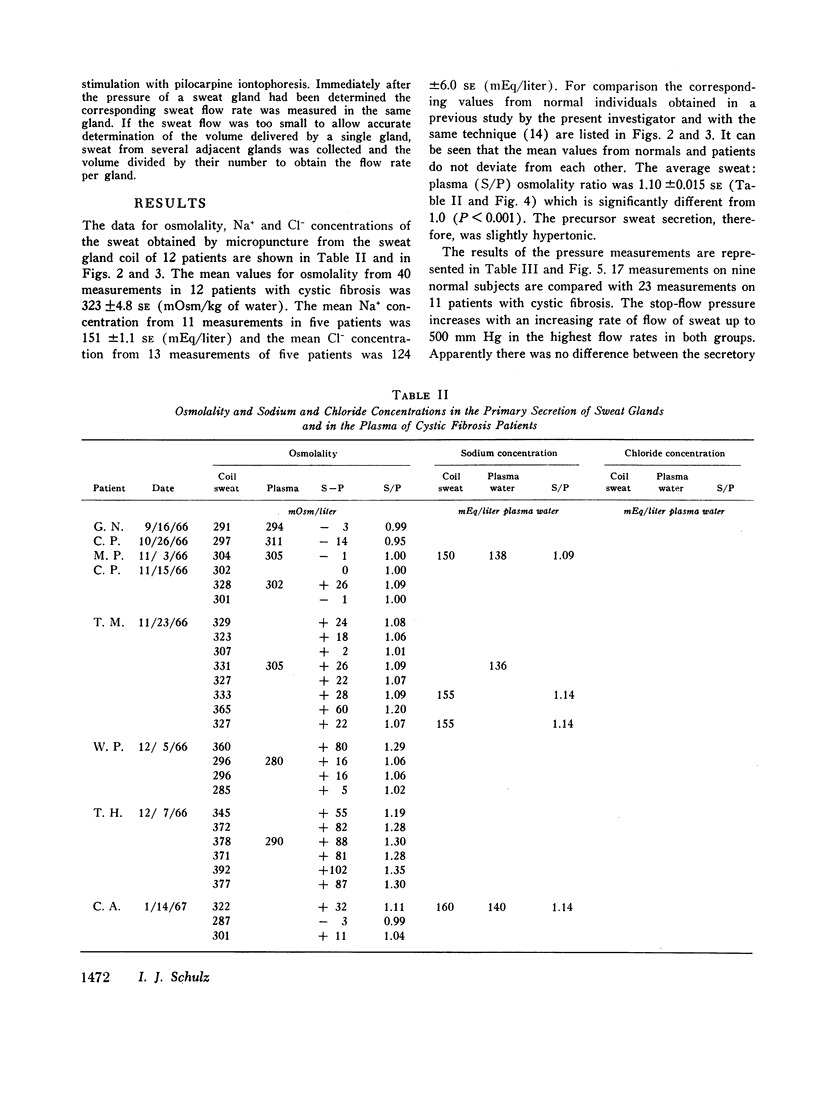
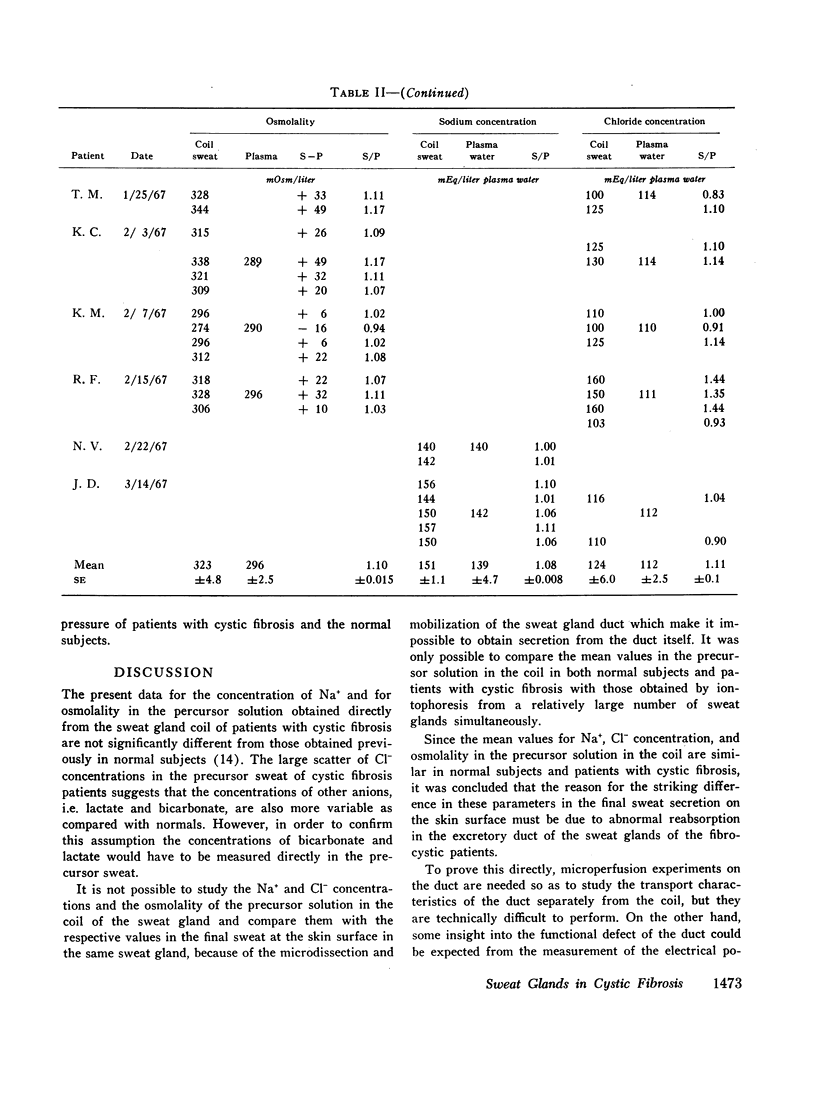
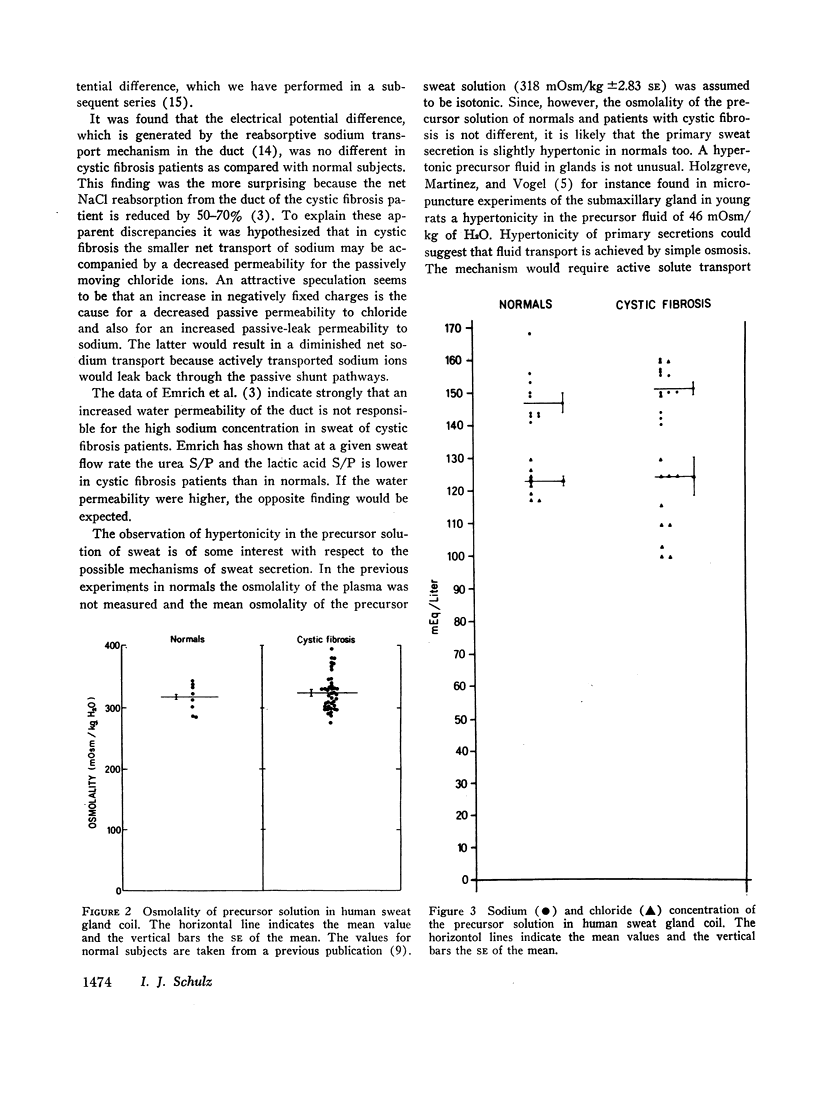
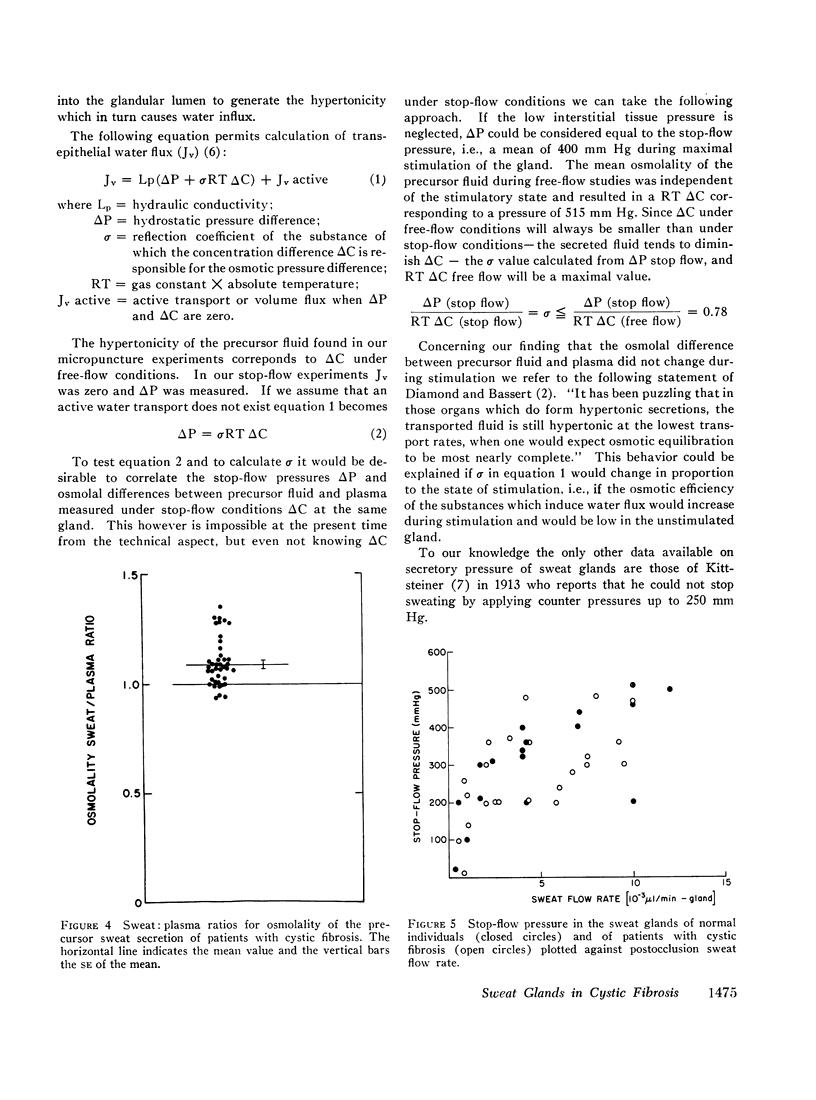
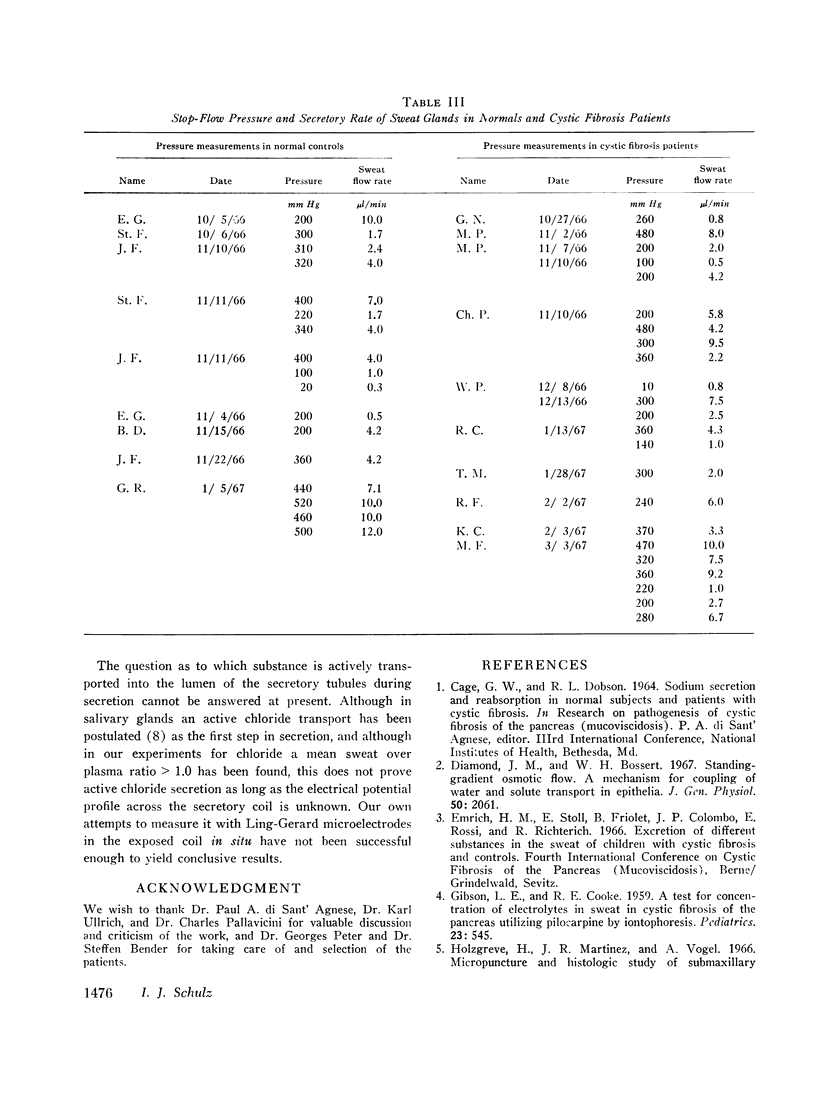
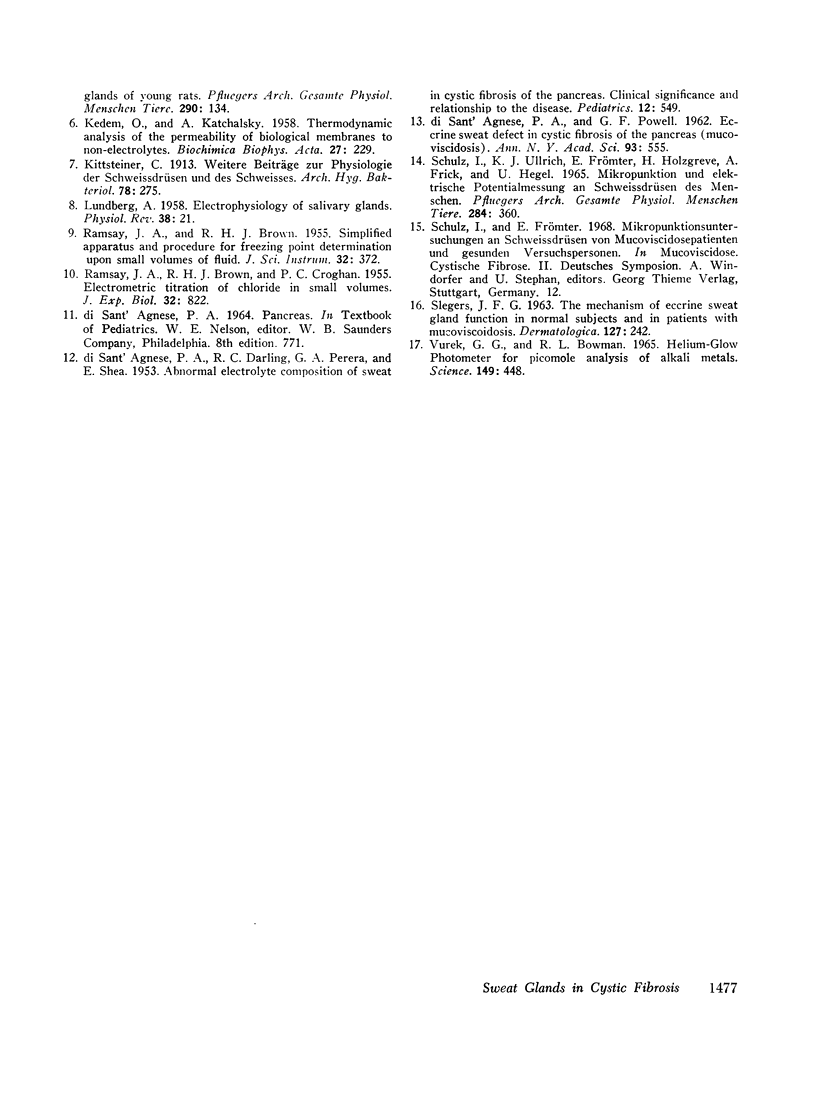
Images in this article
Selected References
These references are in PubMed. This may not be the complete list of references from this article.
- DI SANT'AGNESE P. A., DARLING R. C., PERERA G. A., SHEA E. Abnormal electrolyte composition of sweat in cystic fibrosis of the pancreas; clinical significance and relationship to the disease. Pediatrics. 1953 Nov;12(5):549–563. [PubMed] [Google Scholar]
- Diamond J. M., Bossert W. H. Standing-gradient osmotic flow. A mechanism for coupling of water and solute transport in epithelia. J Gen Physiol. 1967 Sep;50(8):2061–2083. doi: 10.1085/jgp.50.8.2061. [DOI] [PMC free article] [PubMed] [Google Scholar]
- GIBSON L. E., COOKE R. E. A test for concentration of electrolytes in sweat in cystic fibrosis of the pancreas utilizing pilocarpine by iontophoresis. Pediatrics. 1959 Mar;23(3):545–549. [PubMed] [Google Scholar]
- LUNDBERG A. Electrophysiology of salivary glands. Physiol Rev. 1958 Jan;38(1):21–40. doi: 10.1152/physrev.1958.38.1.21. [DOI] [PubMed] [Google Scholar]
- Vurek G. G., Bowman R. L. Helium-Glow Photometer for Picomole Analysis of Alkali Metals. Science. 1965 Jul 23;149(3682):448–450. doi: 10.1126/science.149.3682.448. [DOI] [PubMed] [Google Scholar]



